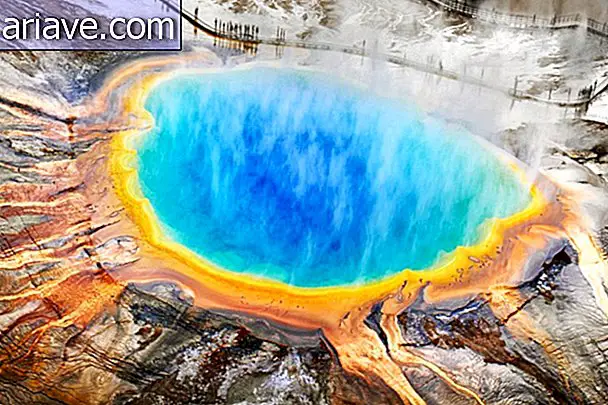Scientists solve mystery about Canada's big crater cause
In Canada, there is a place called the Sudbury Basin that was formed by a large crater. Scientists were well aware that its formation had been due to the impact of a large celestial object, but it was not yet known which one. Now, experts have just concluded that this object was a huge comet, which hit Earth more than 1.8 billion years ago.
The Sudbury Basin has an elliptical shape 60 kilometers long, 30 kilometers wide and about 15 kilometers deep, being located near the city of Sudbury in the Canadian state of Ontario.
According to Aunt Ghose's Live Science article, since some miners discovered rich deposits of copper, nickel, palladium, and other valuable metals in the 1880s, scientists have wondered how the giant hole on Earth came into existence.
In the 1960s and 1970s, some geologists analyzed and dated crater rocks, determining that the impact was quite old, between 1.6 and 1.9 billion years old.
However, a more recent assessment found that the impact occurred about 1.8 billion years ago (based on crystallization of zirconium after the melt caused by the impact), according to a 2008 article in the journal Geology. But still no one knew exactly what kind of impact the massive geological feature had formed.
Search

Research that concluded that the impact of the great Sudbury Basin crater was made by Laurentian University scientists. Joseph Petrus, a doctoral student of science, was one of the study's leaders. To solve the mystery of the crater, he and his colleagues once again looked at the chemical elements found in the rocks.
According to scientists, as the earth attracts siderophils - elements attracted by iron - which are substances like iridium or gold within its nucleus, the planet's crust contains relatively low concentrations of these molecules.
However, space debris contains more siderophil elements than the earth's crust, and space rocks such as asteroids usually contain more of these elements than comets, which are known as the "dirty snowballs" of the solar system.
Comets are considered to be the cosmic remnants of a mixture of ice, gas, and rock dust from the solar system's formation 4.6 billion years ago, while asteroids are rocky bodies that orbit the sun but are too small to be considered. planets.
Ratings and Results
According to Live Science, by studying the concentration and distribution of siderophil elements in impact rocks, in addition to the size of the area where the impact melted the rocks, Petrus and his colleagues identified what formed the crater.
According to the discovery of Petrus and his team, a comet filled with pieces of rocky asteroids, which is different from a common asteroid, formed the crater. According to scientists, the huge comet exploded in the shallow oceans near the continental shores of a primitive supercontinent, known as Nuna, about 1.9 billion years ago.
The supercharged collision threw debris far away, so much so that fragments of impact rock reached the region of what is now Minnesota.
Experts said the impact left a giant crater with a complex shape, measuring about 150 kilometers in diameter, but that over the ages has gradually transformed into its current size and shape. Petrus said that at that time all forms of life on earth were from unicellular primitive organisms.











